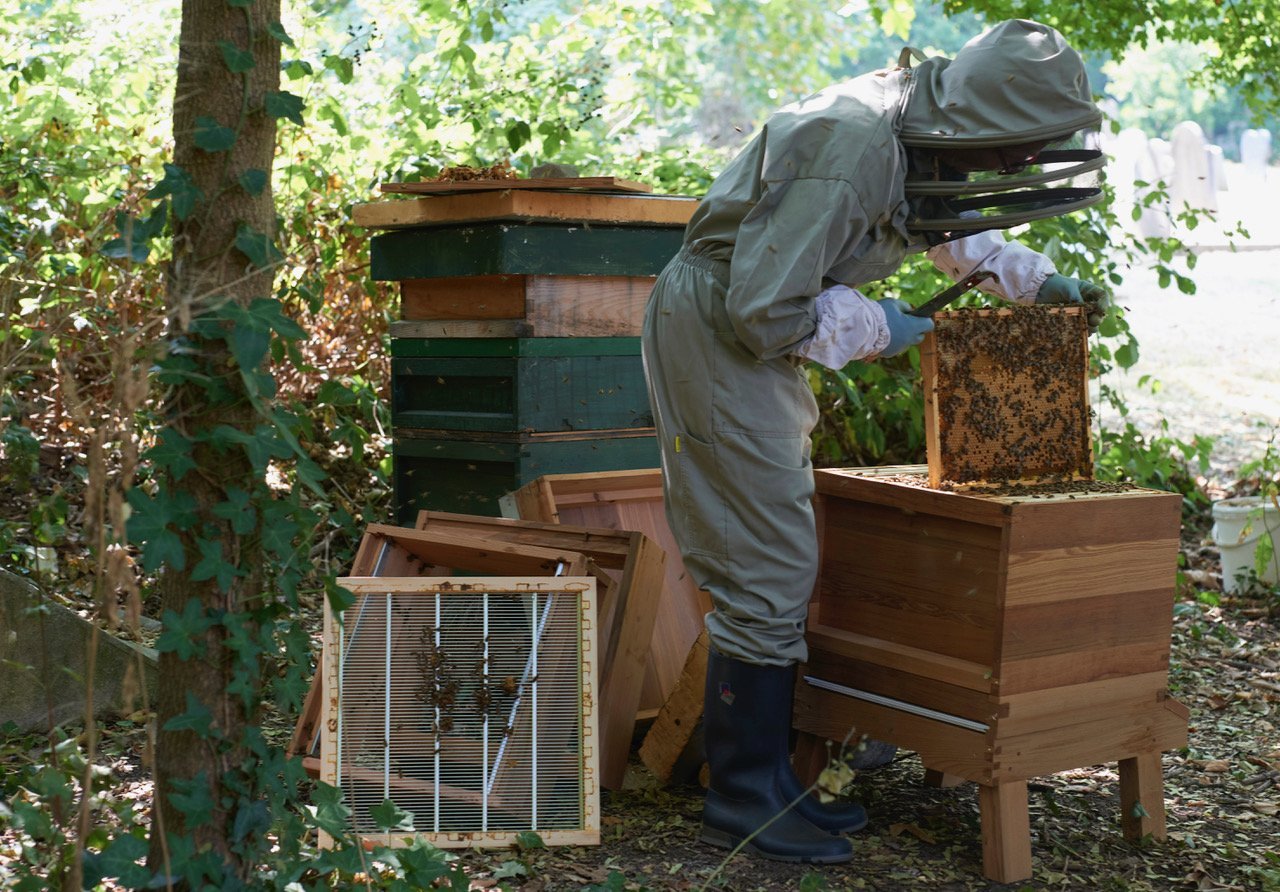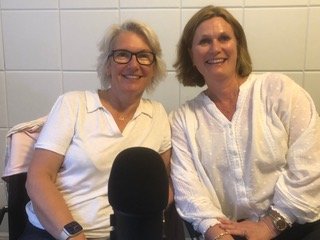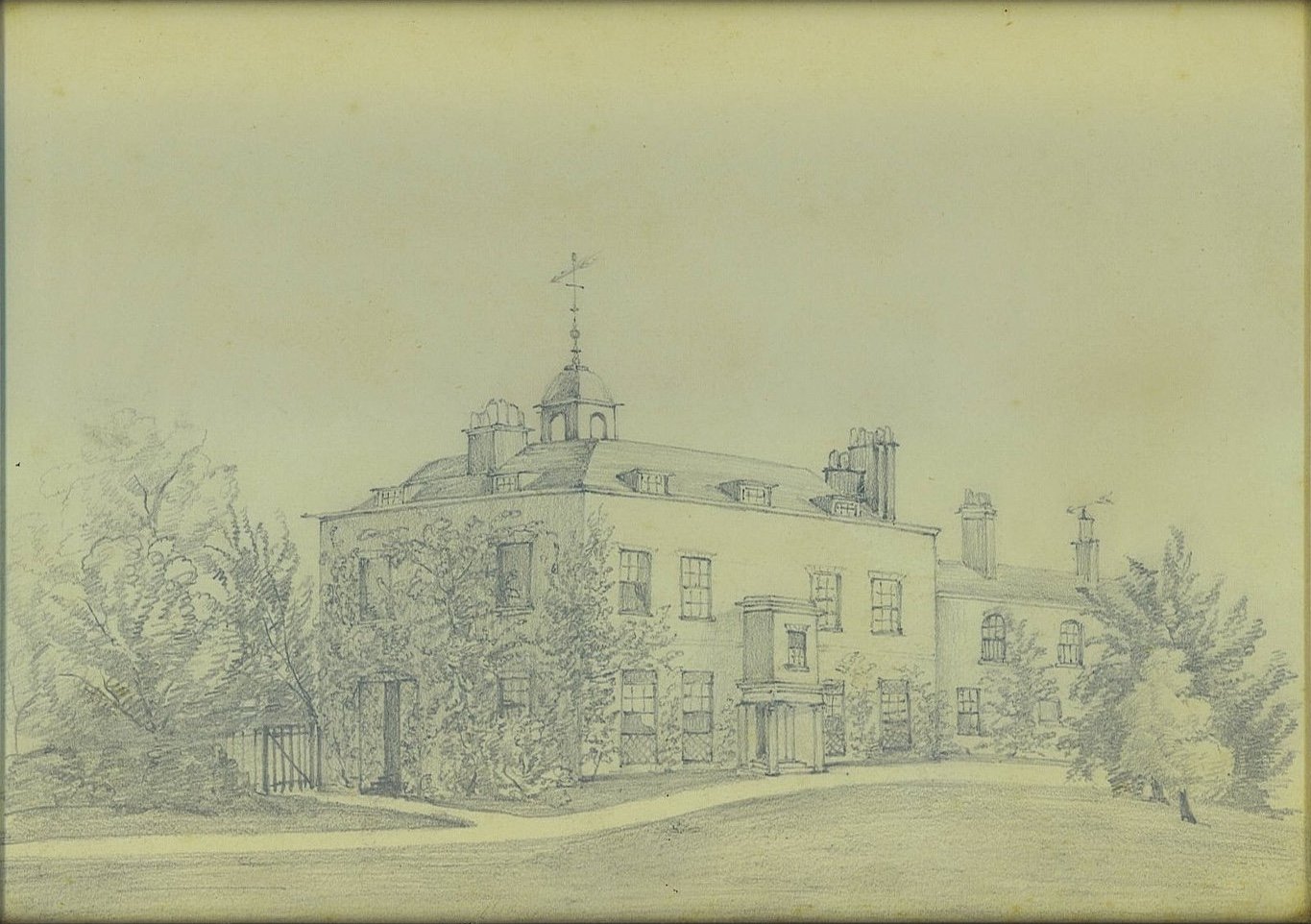The Bell House Podcast focuses on the untold stories within its walls – both past and present. You’ll be introduced to its former residents and learn about their role in history and the significance of the house itself. You’ll also hear about the modern-day Bell House and its many volunteers (beekeepers, quilters, gardeners and potters to name just a few). They’ll tell us about their personal passions, life-changing decisions and the role that Bell House plays in their lives and wider community today.
Episode 9: The Bell House Pottery
One of the latest ventures undertaken at Bell House has been the creation of a pottery studio. It’s run using sustainable energy - solar panels and a heat pump - and it’s where students of all abilities can learn coiling, pinching and slab building techniques as well as gaining confidence using a potter’s wheel.
Birgit Pohl and Jim Belben discuss the therapeutic benefits of handling clay and focussing, very keenly, on the potter’s tasks. All worries and stresses disappear amid the deep concentration required to mould, decorate and glaze.
Birgit, who formerly worked in publishing, also talks about why she became a professional ceramicist. The creative inspirations behind her porcelain pots and lidded jars are drawn from mid-century design and the Bauhaus movement.
Episode 8: The Bell House Bees
Annie McGeoch’s fascination with insects began as a child. So, it’s no surprise that she is now the bee keeper responsible for looking after the colonies living in the Bell House garden hives.
In this episode she talks about the amazing life cycle of the insect we rely on to pollinate so many of our fruit and vegetables. She also warns of the dangers bees, of all species (and there are thousands of them), face. The threat posed by asian hornets in particular is one of nature’s horror stories.
Also, if you want to know what exactly a bee-line is and where exactly you might see a drone congregation (if you are very lucky indeed), then this is the episode for you. Annie has the answers.
Episode 7: The Bell House Gardeners
The Bell House garden is one of the largest in the area and, when Dulwich was a village surrounded by countryside, would once have been even bigger.
Shelagh Hornby and Sarah Hammond discuss the history of the garden, the ancient trees within it, and the joy it brings to the volunteers who keep it beautiful and the visitors who return season after season.
The focus, though, is to ensure that the garden delights not only us humans but other creatures too. A citizen-science survey recently found that the abundance of flying insects in the UK has plummeted by nearly 60% in the past 20 years. So, what’s happening at Bell House to help wildlife flourish?
Episode 6: The Bell House Quilters
Hundreds of quilts have been created at Bell House; lovingly stitched and then (mostly) given away. The recipients are premature babies, sick children, teenage care leavers and refugees.
Janis Fuller and Marianne ten Kate, volunteers who run The Quilt Academy, talk about the joy of giving, the creative process and the mental health benefits of doing something you love, with precision and care, block after block after block. Don’t know what a block is? You soon will, along with patches, frames and why medium weight cotton is the best.
Marianne and Janis also delve into the fascinating history of quilting - an art form that has given women down the centuries a way to express themselves, sew together, and produce some truly stunning creations. Some have even ended up as museum pieces.
Episode 5: Dyslexia provision at Bell House
According to the British Dyslexia Association 10% of the UK population are dyslexic, of which 4% are severely affected. Assisting this group to thrive is at the centre of Bell House's heart. Ruth Pierce and Tina Hunter are two long-term volunteers involved in delivering that mission. In this episode, as well as outlining what's on offer in terms of learning support, they shed light on the emotions a dyslexia diagnosis can bring - relief, guilt and, sometimes, even pride.
They also explore what getting a diagnosis entails, the benefits of receiving one, and how best to talk to your child about the impacts dyslexia will likely have on their learning. Crucially, also, they detail how, with help, many of those impacts can be overcome.
The annual Dyslexia Fair at Bell House is held in September.
Episode 4: The Artist in Residence at Bell House
Atalanta Xanthe was hailed as “the next Lucien Freud” when she was just seventeen. She has created a lot of art in the ten years since then. Inspiration has come from, among other things, the New Mexico desert landscape of her childhood, medieval books of hours and a very unexpected phone call from a brother she didn’t know she had. She’s found a second one since then.
Light is also shed on the thorny dilemma that many artists face – can they make a living doing what they love? Atalanta explains what it takes to ensure she can do just that and unpicks the commercial considerations that underpin her creative career.
Episode 3: The Bell House Charity
Angus and Fabienne Hanton are the current owners of Bell House and founders of the charity which works within its walls. It supports educational and creative endeavours – quilting, gardening, book-binding, printing, arts, crafts and pottery – but at its heart is a range of activities aimed at helping dyslexic learners: something which has great personal resonance for Angus and Fabienne.
There was always a plan to set up a charity in retirement, but why is Bell House its home? That story centres on a quick fire shift of direction while visiting an estate agents – oh, and a small boy’s love of conkers too.
Episode 2: The Residents of Bell House
Bell House has been home to many wealthy individuals and their families over the centuries – immigrants, self-made- entrepreneurs, reformers and philanthropists among them. The lives of its residents chart the country’s social and economic changes through time.
Local historian, Sharon O’Connor, tells their often surprising stories. Discover which future Lord Mayor of London, and son of a pastry cook, built the house in 1767 and which resident was responsible for the first ever department store (and no, it wasn’t Mr Selfridge). You’ll also hear about wanton drunkenness, teenage high jinx, blended families, patriotic grief and theosophy – oh, and the strange tale of the man who kept his coffin behind his chair in order to be forever reminded of the inevitability of death.
Episode 1: The Garage Press at Bell House
Do you know the derivation of the phrase “coming a cropper”? Or what on earth a “wayzgoose” is? If not, don’t worry. Simon Trewin does. He has re-created a printing works from a century or more ago and located it in the Bell House garage. In this episode he explains why he is drawn to old presses and metal type and details the history of what was once one of the country’s biggest industries. Before automation and consolidation there would have been a printing works in every town or village, employing hundreds of thousands of workers nationwide. What motivated Simon to turn back the clock and find delight in printing the old-fashioned way?










